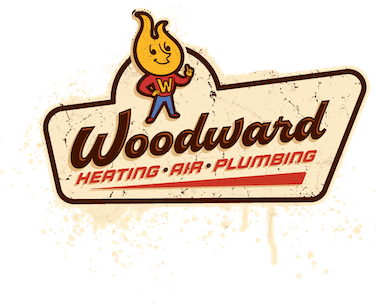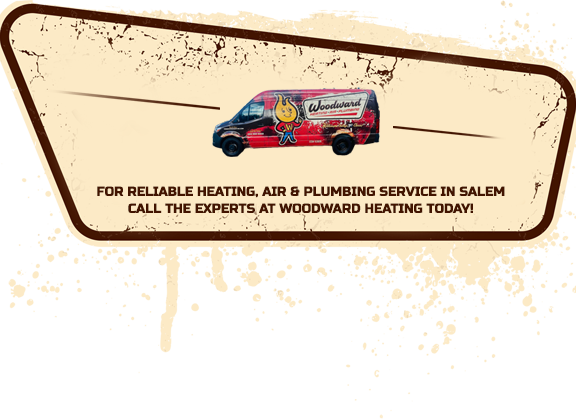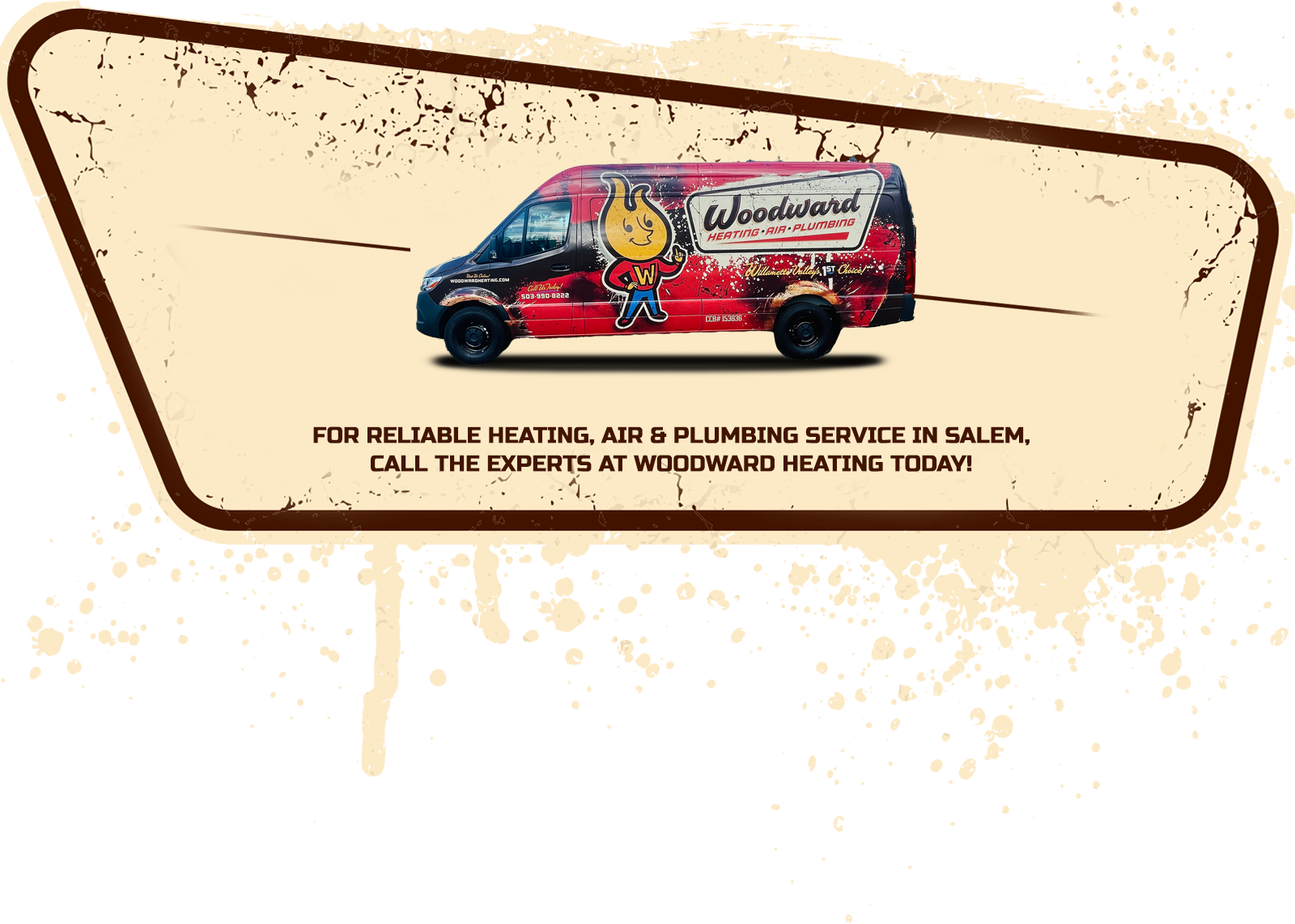If properly maintained, most gas furnaces will last 15 to 20 years and provide your family with comforting warmth in relative safety. That being said, it’s important to know about certain gas furnace problems that can become dangerous if ignored.
In this blog post, we’ll cover these 4 topics:
- How a blocked or damaged exhaust flue can expose your home to exhaust fumes and carbon monoxide
- How a malfunctioning thermocoupler can allow a buildup of combustible gas
- How a corroded or cracked heat exchanger can leak carbon monoxide into your home
- Ways to prevent potentially dangerous furnace problems
If you know your furnace is overdue for a repair or maintenance, Woodward Heating’s knowledgeable technicians are ready to help. Request same day service here.
Blocked or Damaged Exhaust Flue
Think of the exhaust flue as your furnace’s chimney. (You might also hear it referred to as a
“furnace exhaust stack.”) Exhaust fumes and carbon monoxide produced by your furnace will travel through the exhaust flue to the outdoors–when everything is functioning properly.
However, various things can cause this metal tube to become damaged or blocked. Flues can crack due to corrosion. Leaks can develop between the pipe’s joints. The damper, which prevents exhaust and noxious gases from being sucked back into the furnace, can also suffer damage.
Blockage can occur when pests make their way into unprotected flues. Sometimes they will stuff leaves, branches, and other debris inside of it. In other instances, they’ll actually die inside the flue, and their remains are what cause the blockage.
What’s the Danger?
Taking all the information above into account, we can see that an exhaust flue plays a vital role in our safety, our indoor air quality, and a furnace’s ability to function.
A blocked exhaust flue might only cause a furnace to short cycle and nothing more. However, a blocked or broken flue also has the potential to circulate exhaust and carbon monoxide into your home. A large concentration of exhaust fumes in the furnace cabinet could also create a fire or explosion hazard.
Malfunctioning Thermocoupler
A thermocoupler might sound like a science fiction term from the latest Star Wars movie, but it’s actually a crucial safety feature built into gas furnaces. When working correctly, the thermocoupler is able to do 2 things:
- Tell whether or not your furnace’s pilot light is lit
- Shut off the gas line if the pilot light suddenly and unexpectedly goes out
- If the pilot light isn’t lit, you want the gas to be turned off so that it doesn’t build up. This, in essence, is the thermocoupler’s job.
What’s the Danger?
If the thermocoupler fails, and your pilot light goes out unexpectedly, gas will start to build up because nothing is there to shut it off or burn it off. If allowed to build up too much, this gas could have the potential to explode. If you’re at home at the time, you might start to smell the gas, but if you’re away at work or on a trip, the gas could be building up for quite some time.
Corroded or Cracked Heat Exchanger
The function of a heat exchanger is pretty much revealed in its name: it heats up the air in your furnace. It’s made up of a set of coils or tubes that can come in various shapes depending on your furnace model and furnace fuel type. Fuel combusts inside of the heat exchanger, making it extremely hot, and then that heat is transferred to the air that’s being blown over it by the blower motor. The blower motor distributes that now-warm air throughout your home via your ductwork.
Sometimes improper venting can cause heat exchangers to corrode. Corrosion can also be a result of old age. The big problem is that this corrosion can lead to cracks in your heat exchanger.
What’s the Danger?
Carbon monoxide exhaust gas can come out of cracks in a heat exchanger, which is dangerous for a couple of reasons. Not only is carbon monoxide toxic (sometimes fatally so), it’s also an extremely combustible gas. In addition, unlike natural gas, there is no mercaptan added to it to give it a bad odor. You won’t be able to detect carbon monoxide by color or scent, allowing it to build up undetected.
How to Prevent Potentially Dangerous Furnace Problems
While your furnace is probably not about to explode at any moment, it’s a good idea to take some preventative measures to not only ensure your safety but to extend the life of your furnace. Here are some steps we recommend taking to prevent potentially hazardous furnace gas issues.
HVAC Maintenance
It might be cliche, but the maintenance really is the best prevention. It’s helpful to get your system checked by a professional HVAC technician because they know how to spot the warning signs of a potential problem.
Ideally, you should get your HVAC system inspected, serviced, and cleaned twice a year. Your air conditioning should be checked in spring, and your furnace should be check-in autumn. After all, no one wants their AC to give out in the middle of summer or their furnace to stop working in the dead of winter.
Get a Carbon Monoxide Detector
Your house might already be equipped with fire detectors (or at least it should be), but fire detectors won’t detect carbon monoxide. As its name indicates, a carbon monoxide detector will pick up on any carbon monoxide in your home and alert you before it reaches a level dangerous enough to knock you out.
If you need help shopping for this important home safety feature, Safety.com has a list of “The Top 50 Carbon Monoxide Detectors” to guide you to some good choices.
Put a Vent Screen Over Your Furnace’s Exhaust Flue
The screen still allows exhaust and fumes to escape the flue, but it also keeps shelter-seeking rodents and birds from entering the pipe. Be cautious about installing a screen with fine mesh, as ice may accumulate on it during winter and cause an obstruction.
Tackling your own gas furnace repairs can be tricky as well as dangerous. Skip the DIY route when it comes to problems involving flammable gases, and contact a professional. As a full-service HVA Contractor, Woodward Heating Air Plumbing can help you with any furnace issues that you are experiencing.





